According to Wikipedia, statistically two people go overboard in any given month which is 24 people per year. 17 to 25 per cent are rescued, that will be just 5. Well, that´s a number one should let sink in. Last week during Ancora Yachting Festival I got approached by Olivier Christen, Sales Director of life jacket manufacturer Secumar, asking if I´d be interested in an elaborate shooting of their products aboard our boats. Well, I saw the chance and offered – simply as this was the one and only available boat – my GEKKO as location and base as a marketing backdrop for their newest products … but with a precondition. “Let´s do a MOB drill. Real life. No faking.” Luckily, Olivier agreed.
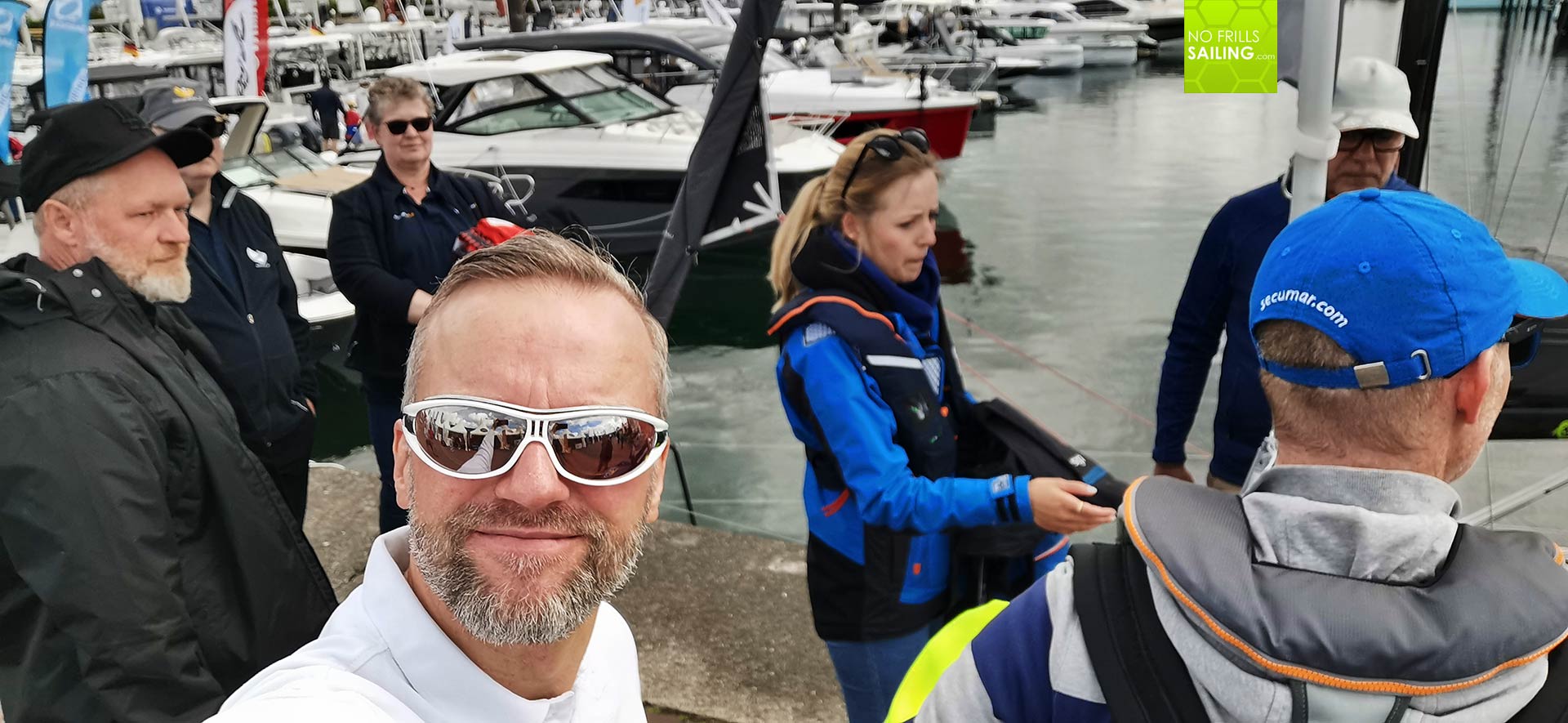
As the day approached, weather looked nice. Well, let´s say it was very nice for a shooting: Blue sky with scattered harmless clouds like sheep, no waves and almost no wind. A low 1 bft with 4 knots TWS, occasional “gusts” with up to 10 knots expected. As I said, perfect conditions for marketing, not so realistic conditions for simulating a MOB. But, as I personally haven´t trained nor drilled this particular topic in years, I thought, maybe not a bad setting for a start. We´ve had a camera-rib with a professional photographer, a film crew and a land-based drone filming the scene. I just had my own assistant aboard filming the occasion – that´s the material I use here now, please excuse the bad quality of the pictures. Nevertheless, it was a great occasion with many, many things learned.
MOB code of conduct … learned a long time ago
I casted my boat at around noon that day. With me aboard Michael, my assistant, and Mona, Marketing Assistant of Secumar. She acted as photo-shoot model as well and was interested to see how the maneuver would play out. As we steamed out, Olivier on the rib put on the survival and emergency exposure suit as water temperatures still haven´t reached a bearable level. Realizing that I haven´t practiced the MOB-maneuver literally in years, I did a quick recap in my mind …
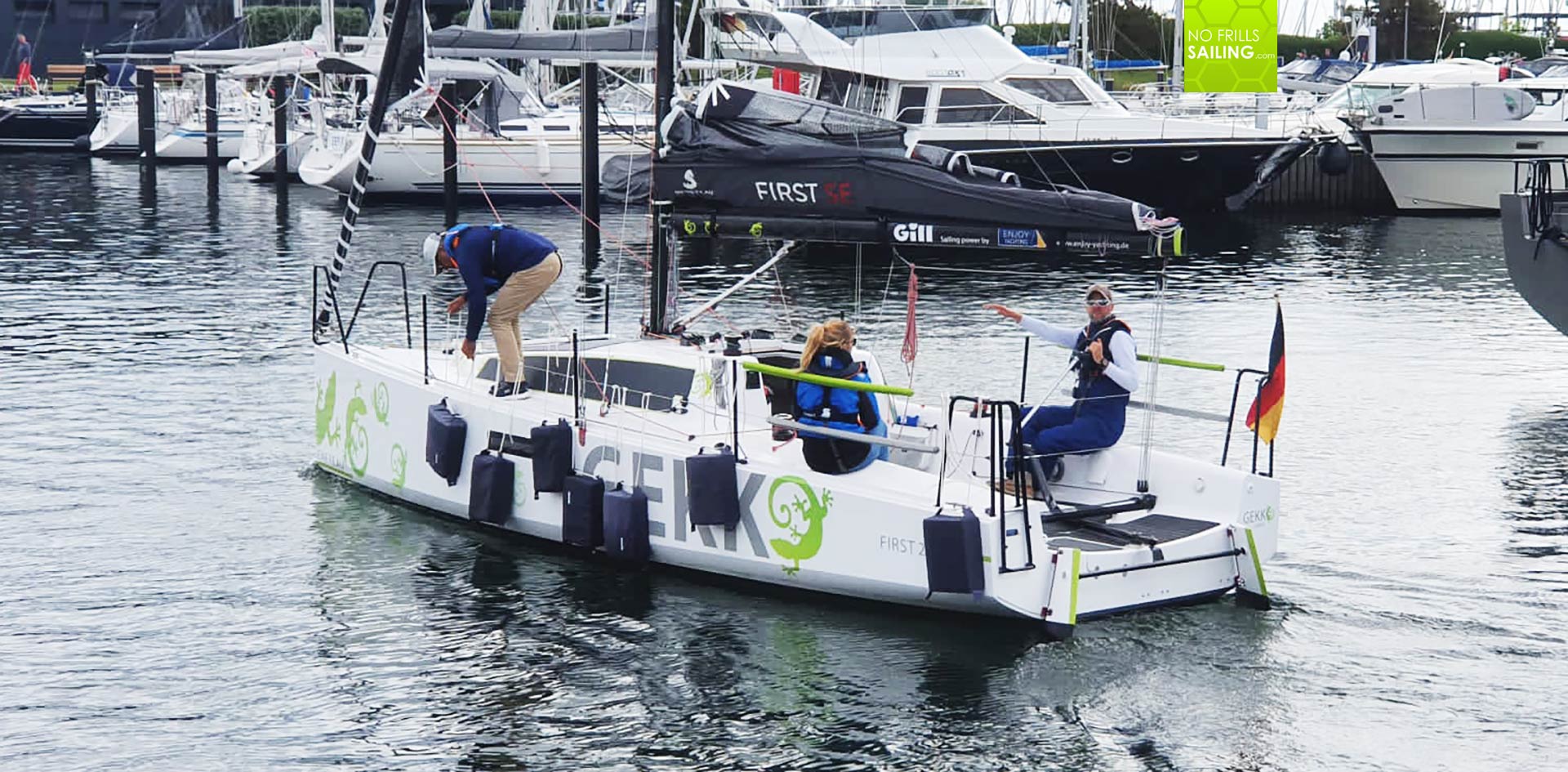
During my Coastal Skipper certification we trained several different ways on how to return and recover a MOB. Our skipper and instructor at that time told us to check which maneuver would suit us most and recommended to stick with it, refine it, train it and have it ready. Well, for me, out of all possible strategies, one remained the easiest and simplest with being also the one that I favoured because it almost always guaranteed a quick, controlled and calm return and recovery of the MOB. This maneuver, in German, we call the “Q-Tack”, please forgive me, I haven´t found the appropriate English term for it – please leave a comment if you recognize the maneuver and have the proper name ready. Allright, let´s do it!
Real life man overboard drill
As we approach the training area some 1 mile off the German coast, via VHF the drone pilot announced his arrival. Olivier in the meantime had boarded GEKKO and was ready. I put the boat on an upwind point of sail as this was the one course that at least produced a little healing and spray around the bow for the cameras. We counted down from 5 to nil and with a little over-acting he fell over board. His life jacket inflated and upon shouting “Man over board!” I immediately beared away to a beam reach course, opening the sheets.

Looking abaft I saw him drifting in the water, waving with his hands. Remembering my own skipper training some six years ago, I knew that I should stay on course for 3 to 5 ship lengths. That may sound like a short distance but it is not. Time seems to tick slower and it felt like an endless amount of time. Mona, assistant to Olivier, became a bit impatient and started to look at me with her eyes saying: “Do something!” This was a drill with no chance of Olivier being hurt, but still, heartbeats reached an upper level … As I felt 5 ship lengths may be approached, I tacked the boat.
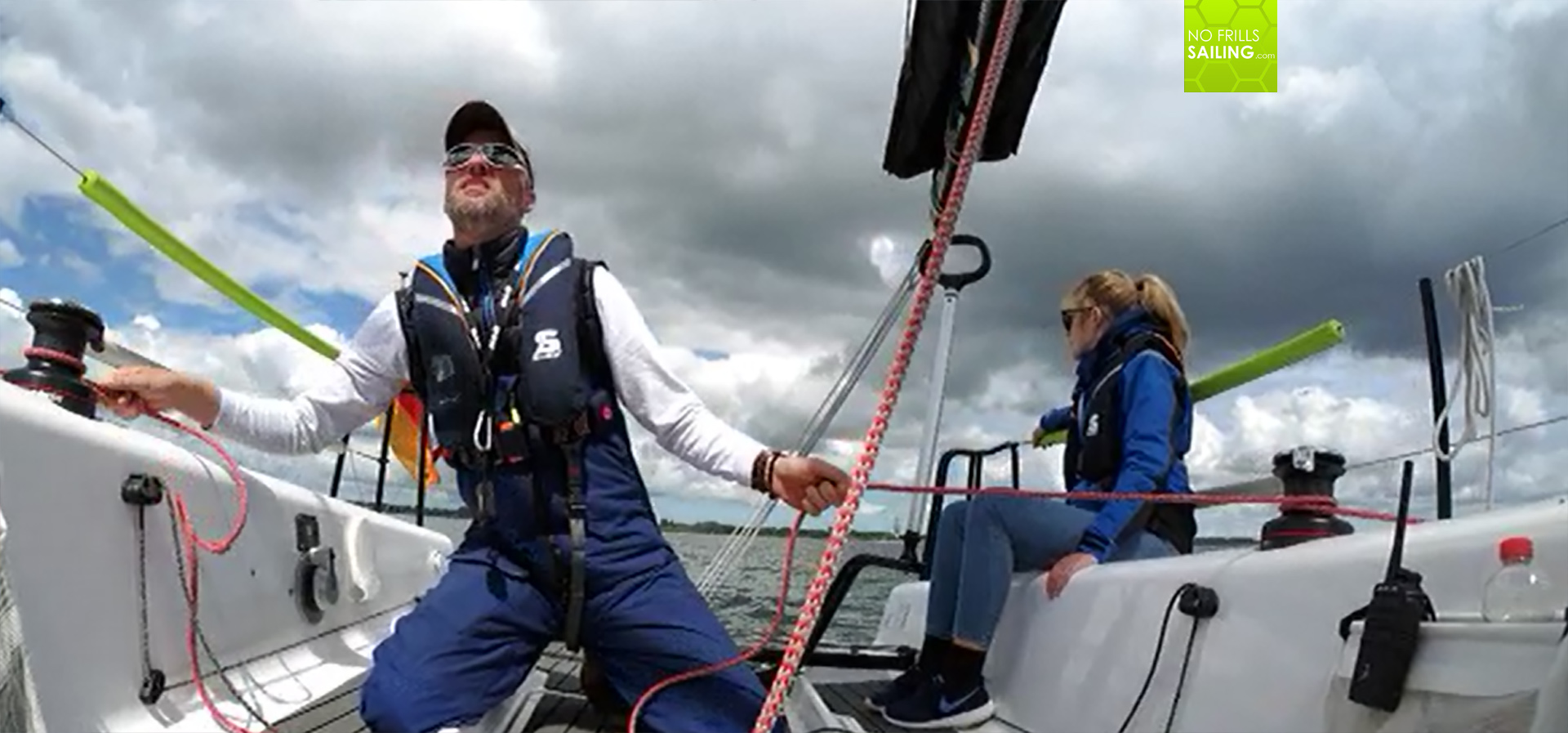
Rudder hard port side, the boat swung her bow through the wind, boom changed sides and I took over the Genoa to starboard side winch. We slowly picked up speed again and dashed towards the victim in the water. Re-collecting 5 ship lengths is also not a matter of seconds, it again felt like eternity. But, I said to Mona, this is necessary to get the crew down, return to calm levels, work out the initial shock and prepare all measurements to recover the MOB. I realized that today – very low wind, almost no waves – conditions were deceptively good, no comparison to a real MOB-weather: Strong winds, high swell and probably downpour, maybe nighttime as well …
How does it feel?
I approached Olivier to leeward side and distance cutting down by the seconds. I felt confident and elevated: Realizing that without any prior practicing nor any briefing I seemed to be able to pull the knowledge and the capabilities to do the things right and by the book instantly. Apparently, my education and training as skipper was sufficient to have burned the code of conduct into my brains.
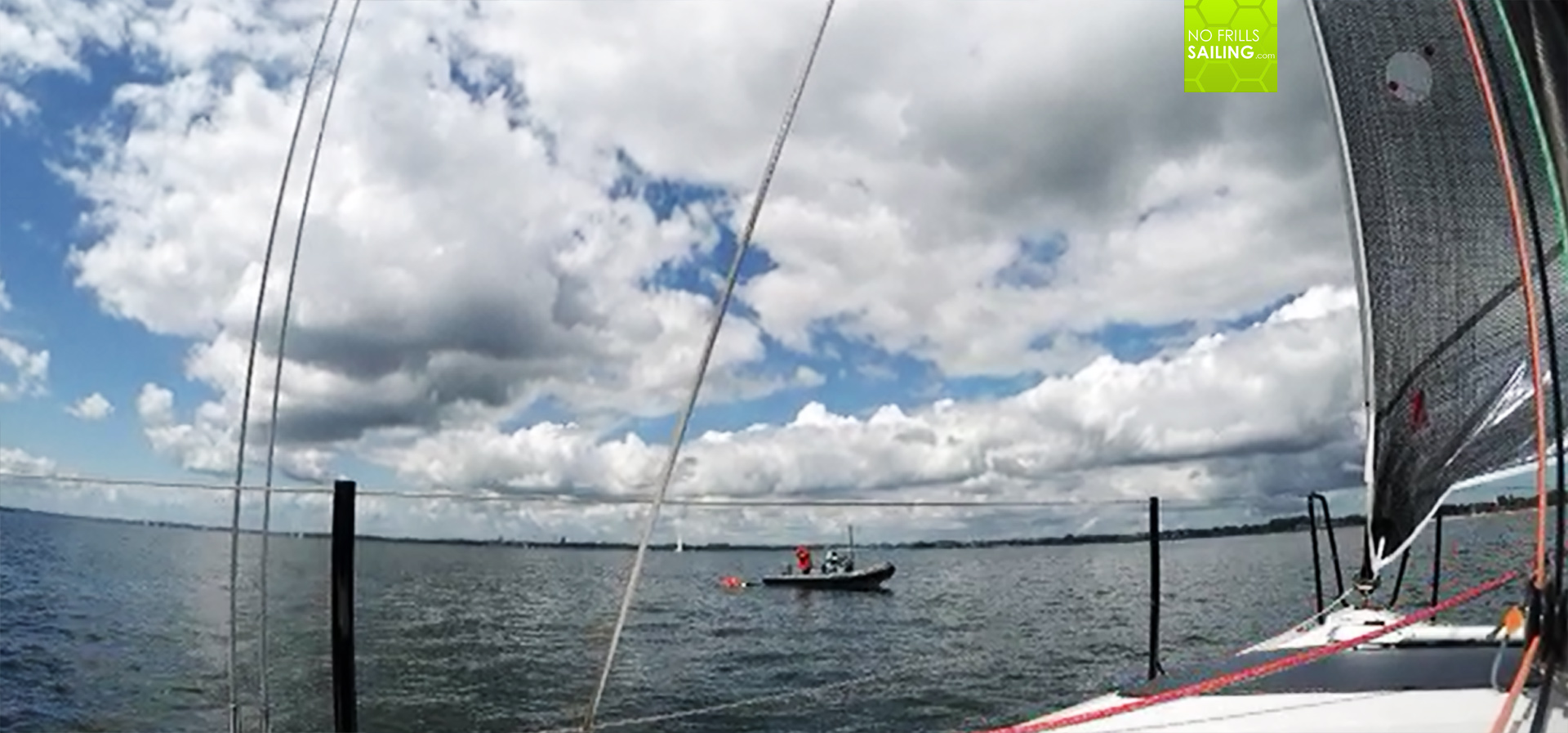
It felt great and frightening at the same time: Doing the “Q-Tack” is, at least personally in my opinion, the best maneuver for MOB recovery under sails. I didn´t quite liked the Quickstop or the Sharnev-maneuver and decided to memorize and go for the Q-tack. This is how it played out: Instantly I knew what to do and pulled it off. At least for now it seemed that this was the right decision.
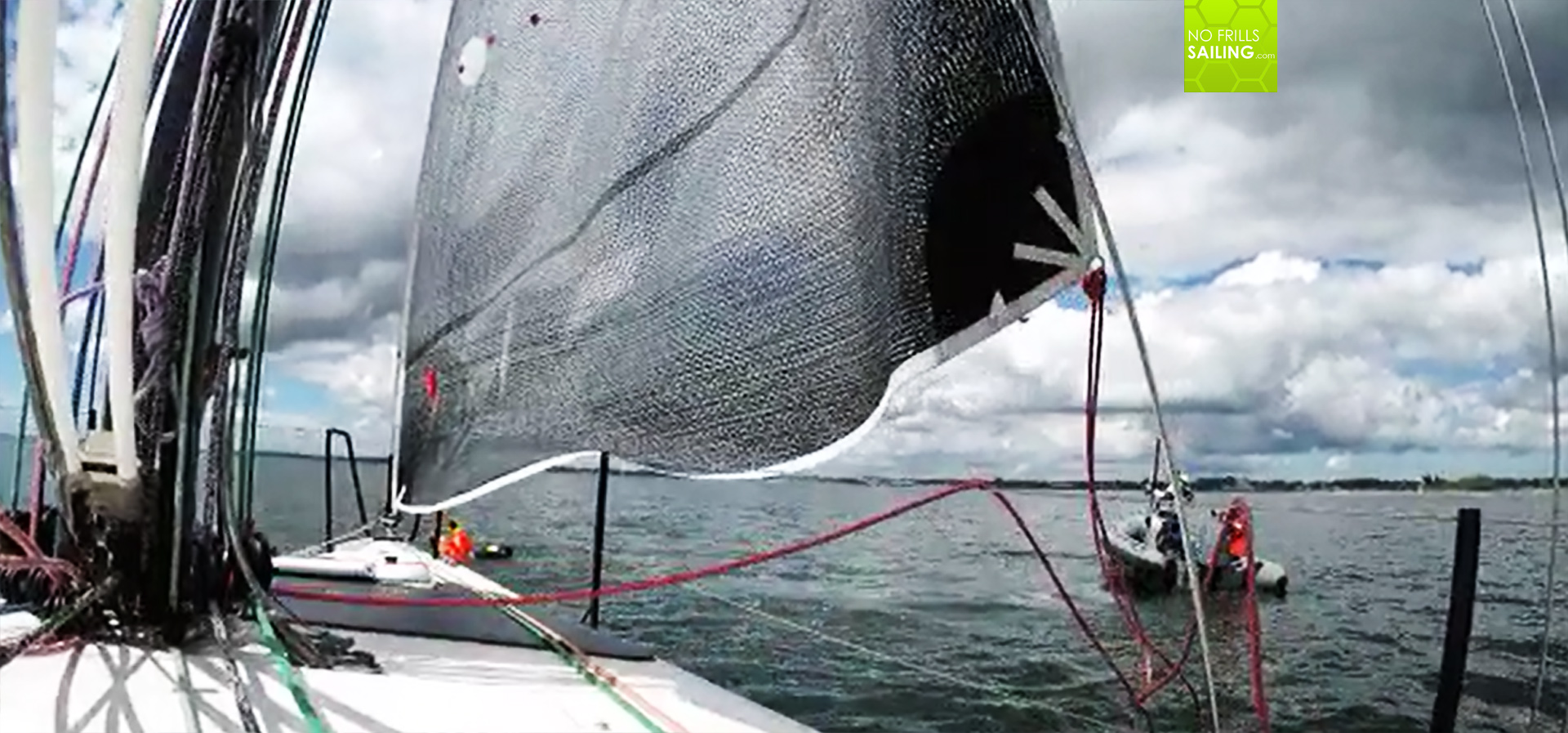
As the distance to Olivier got closer and closer, I prepared for the right moment to let go of the sheets. Counting down in my head to wait for the right moment, I regularly checked the Windex. The idea is to arrive some 1 to 2 boat lengths to leeward to the MOB. To exact leeward side, let go of all the sheets and shoot head-to-wind. The boat´s remaining speed would take you right next to the MOB and act as a brake.
Deciding factors
I have never ever practiced this maneuver with my own boat before, which is a deciding factor. Some boats will take longer to come to a standstill, some will brake down instantly. Well, as for my boat, we only very slowly reduced speed. Of course, with no headwind and all and no waves acting upon our hull, it was more like an easy drifting towards the MOB. And I instantly remembered how hard we practiced back in the day of my skipper-course in various different conditions. “Learn how your boat behaves, test it and get a feeling for her…”, our trainer encouraged us.
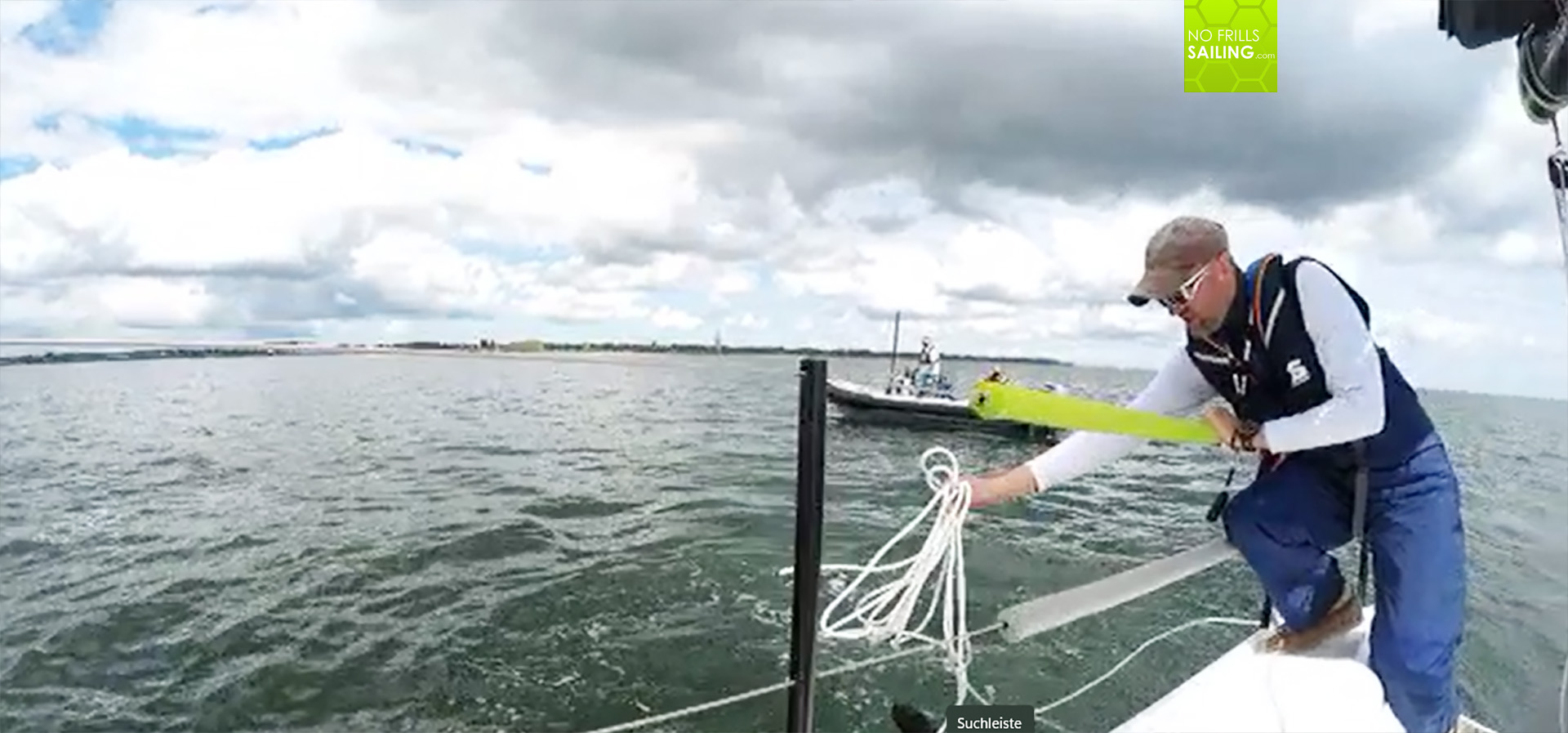
As I reached Olivier and came alongside – precise as a Swiss clockwork – I handed him a lifeline. “Thank you”, he said and smiled, his face a bit red from the chilly temps of the Baltic Sea. Another factor: MOB being conscious and able to assist his own rescue is so much better and easier than dealing with an unconscious person: How hard it is to get back aboard a person who is not able to assist at least ab bit, I had experienced in a MOB-drill that went horribly wrong some years ago, you might like to read this article as well.
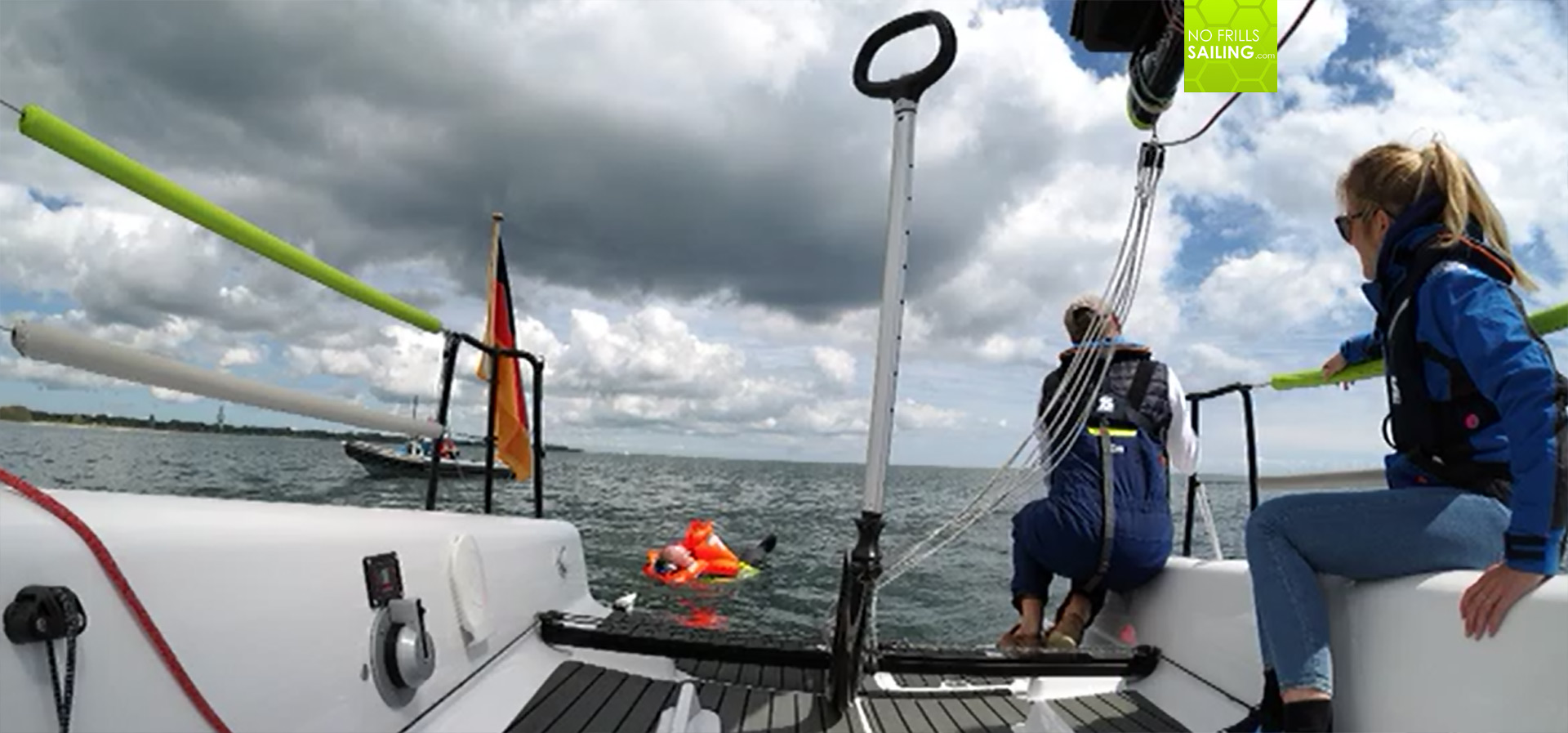
Having Olivier at my stern, grabbing the lifeline and holding on to it, I opened the reeling, folded down the bathing ladder and pulled him gently towards the boat. I felt elevated and happy since sailing-wise everything worked out just fine. The maneuver went down smoothly like ABC, by the book, as to say, and the guys on the cameras confirmed by VHF that no second take would be needed: “Great pictures, guys!”. On the other hand, upon taking his hand and helping to do the one step aboard, I felt terrified as well: As real as this one was meant to be, as unrealistic this training was in the end, one must recognize honestly.
Saved at last! Lessons learned.
Olivier smiled and shook off the water from his survival suit. Working for the manufacturer of life jackets, he of course was used to falling into the water, to a vest inflating and to drifting in the sea. He also told me that they had done such a shooting more than a dozen times and that this wasn´t anything special for him. Nevertheless, every flawless maneuver is a box ticket, don´t mention the Endorphin released. What have I learned today? I´d say, there are three major lessons for me as a sailor. First one is a shock: Not practicing MOB code of conduct for years now was a realization I haven´t seen coming. It is a negligence that is inexcusable. As much as I love sailing and cruising, a good skipper simply must keep his capabilities trained and up to date regularly.
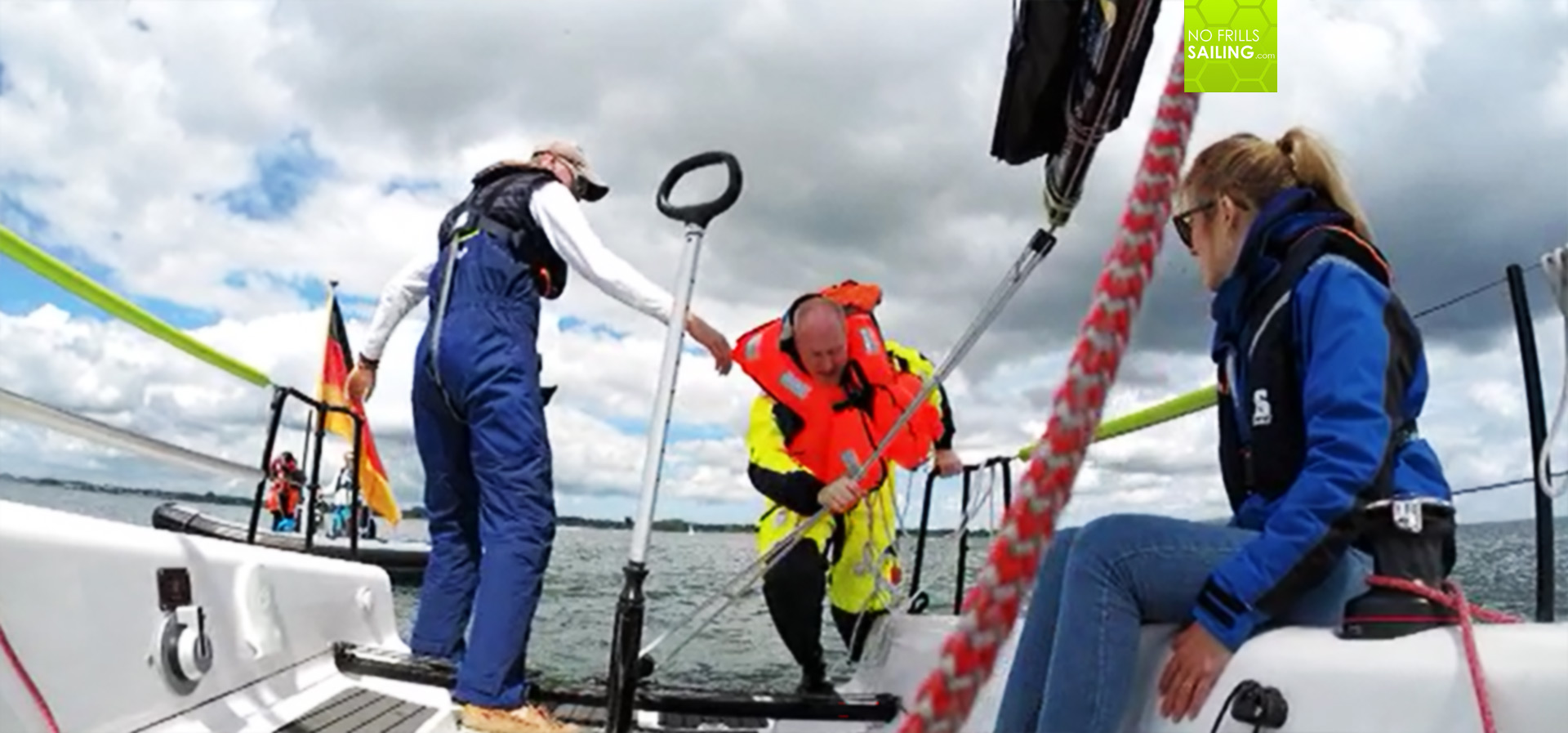
Second lesson learned: It comes as a big relief that apparently my theoretical and practical skills are sufficient enough to pull off a MOB maneuver without prior training nor any preparation. This gives confidence and satisfaction. It also means that a proper sailing school and good instructors (and I think I luckily chose one of the best sailing schools on the German Baltic shoreline) can instill a high quality education and training into their scholars. Also meaning that good training will improve capabilities and make a skipper being able to react quickly and efficiently.
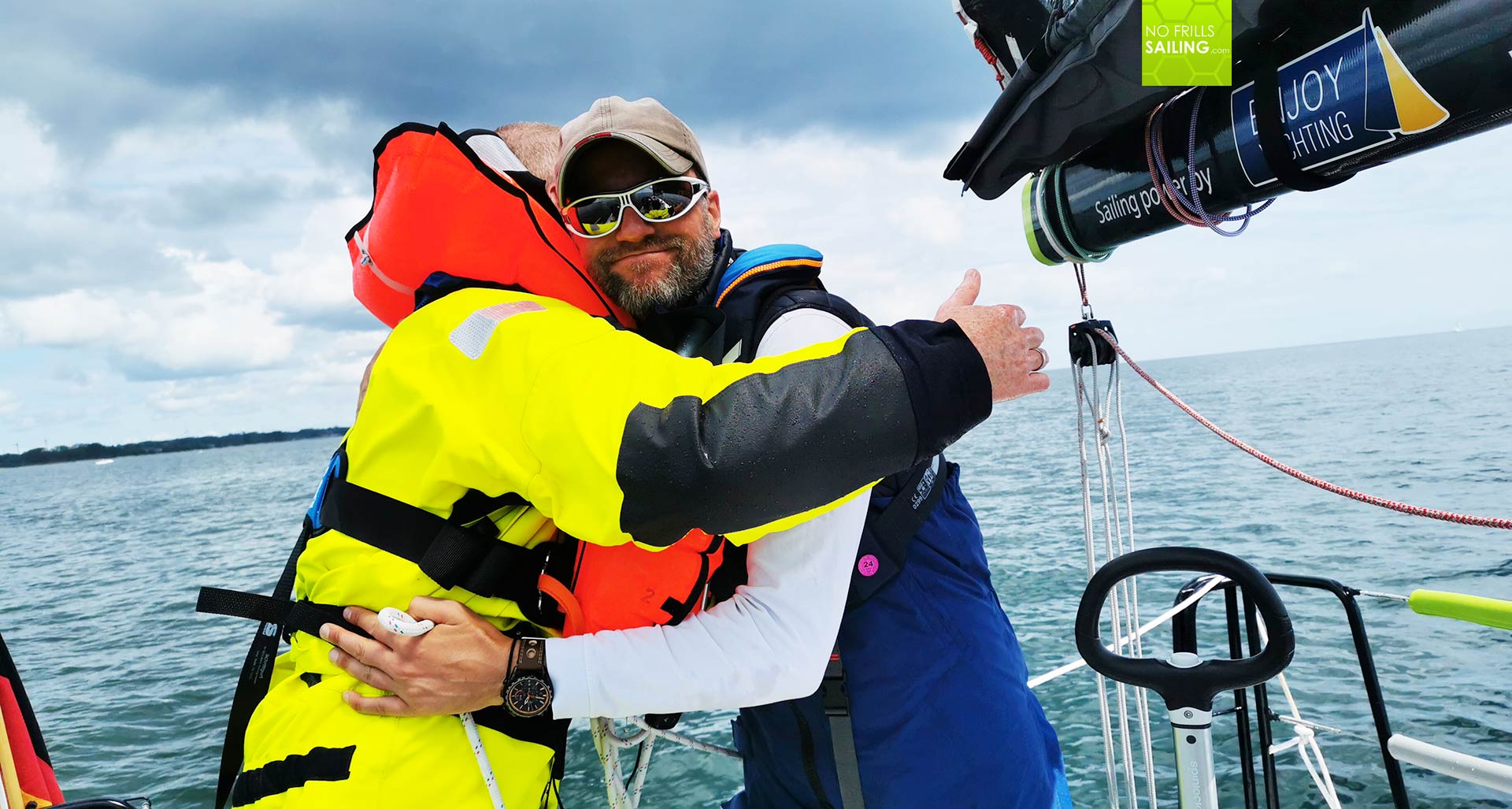
Third and last: Never go MOB! As easy as this occasion was, as nice the pictures are and as good for the Secumar catalogue those “dramatic” scenes will be – the worse a MOB in real life will be. I again vividly realized that a man does normally not go overboard in 1 Beaufort. During best illuminated noon time. In a no-wave condition. This won´t be the case. If it happens, it will be a rough, stormy, rainy, cold and dark night, the boat dashing through spray, sails reefed fully, no external light. Help us God, I sincerely think whilst returning to my berth, that this never ever happens!
You might as well be interested in reading these related articles:
How does it feel to go MOB?
MOB-drills with a dummy
Life jacket lessons: Sailing with kids
